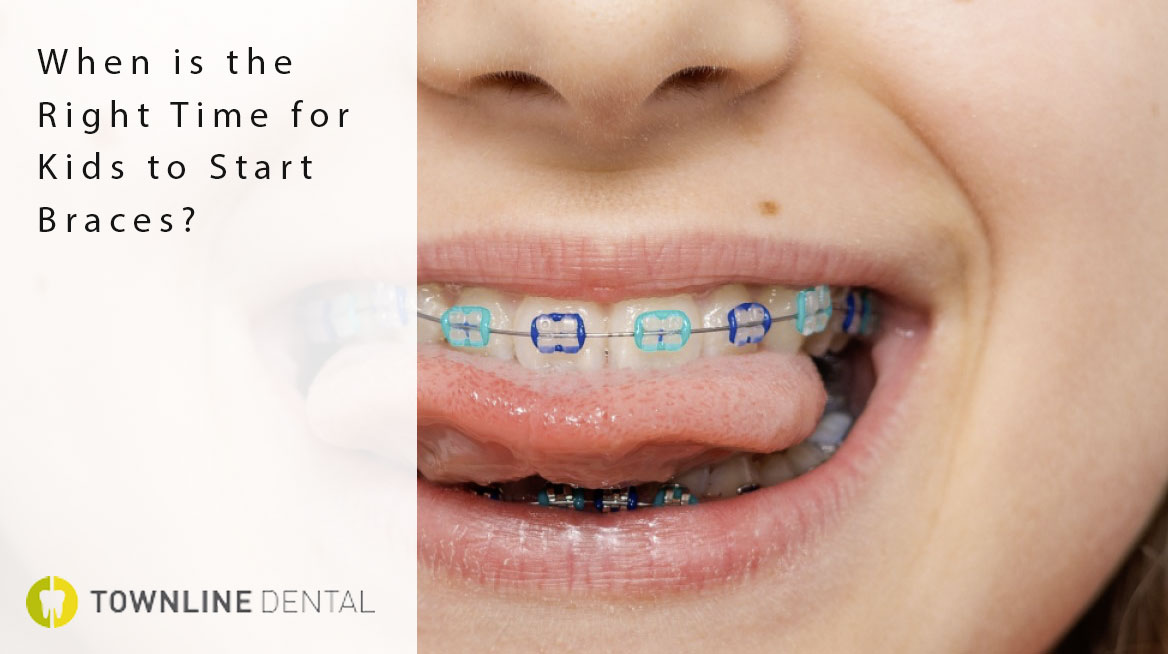Do your kids need braces? Unsure when to start their orthodontic treatment? Discover the ideal age for kids to begin braces. We’ll equip you with all the details you need to make the right choice for your child’s oral health.
What are braces and how do they work?
Braces, orthodontic appliances used to correct misaligned teeth and bite issues, comprise brackets, wires, and bands that gradually shift teeth into proper alignment. Brackets affix to teeth with adhesive, wires thread through them, applying gentle pressure to guide teeth alignment. Bands support wires and hold them in place. Braces come in metal, ceramic, or clear aligner forms, chosen based on orthodontic needs. Treatment duration varies, typically lasting one to three years, with regular adjustments and check-ups. While braces may cause initial discomfort, it’s temporary and manageable with over-the-counter pain relief or orthodontic wax to ease irritation.
Signs that your child may need braces
These are some common indicators that may suggest orthodontic treatment is necessary.
- Crooked or crowded teeth: Misalignment can impact both appearance and oral hygiene.
- Difficulty biting or chewing: Struggles with certain foods could signal a misaligned bite.
- Speech difficulties: Issues like lisping may be linked to misaligned teeth or jaws.
- Jaw discomfort or clicking: Pain or clicking sounds when opening or closing the mouth might indicate a misaligned bite or TMJ disorder.
- Early or late loss of baby teeth: Premature or delayed loss may indicate misalignment of permanent teeth.
Benefits of starting braces at the right time
Starting braces at the optimal time can lead to various benefits for your child’s oral health and overall well-being. These benefits include:
- Early intervention: Commencing orthodontic treatment early can forestall the progression of issues, averting more severe complications later. By timing braces appropriately, you may lessen the necessity for extensive corrective measures down the line.
- Enhanced aesthetics: Braces can notably improve your child’s smile by rectifying misalignment and straightening teeth. A radiant smile can bolster their self-assurance and elevate their quality of life.
- Improved oral hygiene: Crooked or crowded teeth can impede proper dental hygiene, raising the risk of dental problems like decay and gum disease. Braces aid in aligning teeth, facilitating more effective oral care and diminishing the likelihood of such issues.
- Optimized bite function: Correcting bite alignment is crucial for optimal chewing, speech, and overall oral function. Braces can address bite irregularities, enhancing your child’s eating comfort and speech clarity.
- Preventive measures: Commencing braces at the right juncture can preempt more serious orthodontic complications in the future. By tackling minor issues early, you can potentially circumvent the need for extensive orthodontic interventions later in life.
Factors to consider when determining the right time for braces
While the general recommendation is to have an orthodontic evaluation around the age of seven, there are several factors to consider when determining the right time for your child to start braces. These factors include:
- Development of permanent teeth: By age seven, children typically have a mix of baby and permanent teeth, allowing orthodontists to assess potential issues like crowding.
- Bite alignment: Correcting overbites, underbites, or crossbites improves jaw function and prevents future dental problems.
- Oral habits: Thumb sucking or pacifier use can affect tooth alignment, necessitating early intervention with braces.
- Facial growth: Some issues like narrow or protruding jaws may require early braces to guide proper growth.
- Patient compliance: Success depends on regular adjustments and proper care, so braces should start when the child can follow instructions.
- Orthodontist evaluation: Professionals will consider these factors to determine the best time to begin treatment. Trust their judgment for optimal results.
Conclusion
Determining the right time to start braces for your child is crucial and should involve consulting with a dental professional. Getting an evaluation around age seven allows for early detection of any issues and expert advice on treatment. Keep in mind that every child is different, so don’t hesitate to schedule an orthodontic evaluation to ensure a healthier oral future. Contact Townline Dental at 604-744-1513 to book an appointment today.
